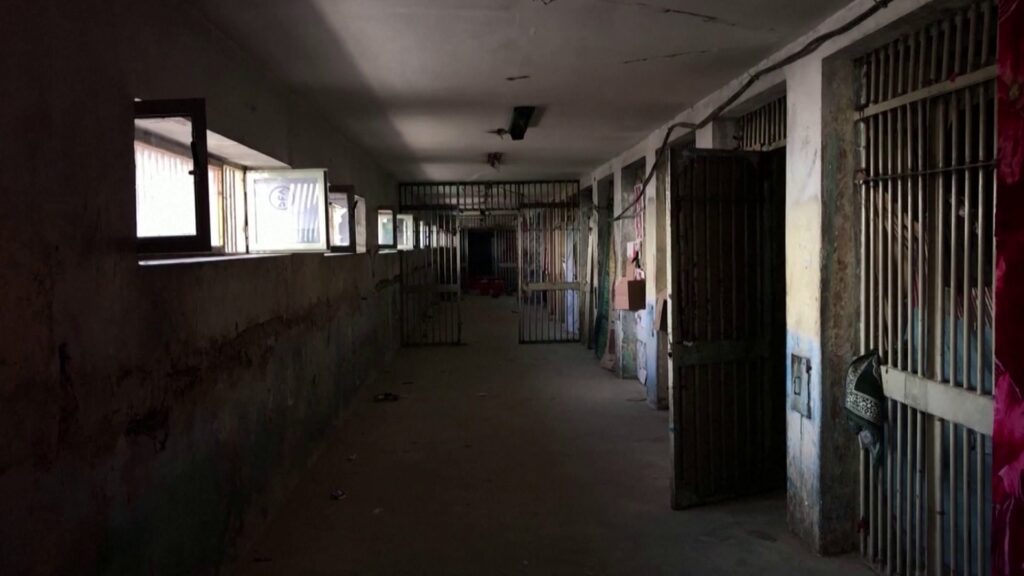
Afghanistan’s infamous Pul-e-Charkhi Prison, which once housed thousands of Islamic Emirate forces and Daesh fighters in its sprawling compound on the outskirts of Kabul, today stands virtually empty, except for the remnants of prisoners’ belongings and discarded documents.
On August 15, as the Islamic Emirate drove into Kabul following the fall of the previous government, the gates to the prison were flung open – ending in some cases years of incarceration for many detainees.
The once heavily fortified facility is now guarded by former inmates – Islamic Emirate members – and only a small section is used for new inmates, alleged criminals and drug addicts arrested in the past month.
A walk through the deserted cell blocks is a stark reminder of the recent changes in the country.
In some cells, personal items that once belonged to prisoners lie forgotten about, and discarded documents are testimony to the unexpected collapse of the former Ashraf Ghani government.
In parts of the prison, signs of the Islamic Emirate flag remain, as does the black flag of Daesh.
One former prison guard, Safiullah, told Ariana News: “There is no one, you can see, they have generally destroyed many places and left.”
While the majority of political prisoners were Islamic Emirate members, no differentiation was made when the gates opened. As a result hundreds of Daesh fighters also fled, as did some hardened criminals.
During the walk through of the facility, Safiullah also pointed out areas that were used for specific purposes.
“This was a Madrasa where the Islamic Emirate’s Qaris [teachers] were teaching students to memorize the Holy Quran. We set up this Madrasa for them,” Safiullah said.
One former inmate, an Islamic Emirate member Mohammad Salim, in turn pointed out the section used by prison guards to mete out punishment.
“They punished us here; they tied our hands here and punished us and beat us here,” said Salim.
Islamic Emirate authorities have however said that they are working to recapture and return some former inmates – especially hardened criminals – to the facility.
Pul-e-Charkhi has a long, disturbing history of violence, mass executions and torture.
Mass graves and torture cells were uncovered dating from the Soviet-backed governments of the late 1970s and 1980s and under the former government it was known for poor conditions and overcrowding.
The prison’s 11 cell blocks were built to house 5,000 inmates, but were often packed with more than 10,000, including political prisoners and hardened criminals.
Some of the Taliban now guarding the site were former inmates while the former guards have fled.
